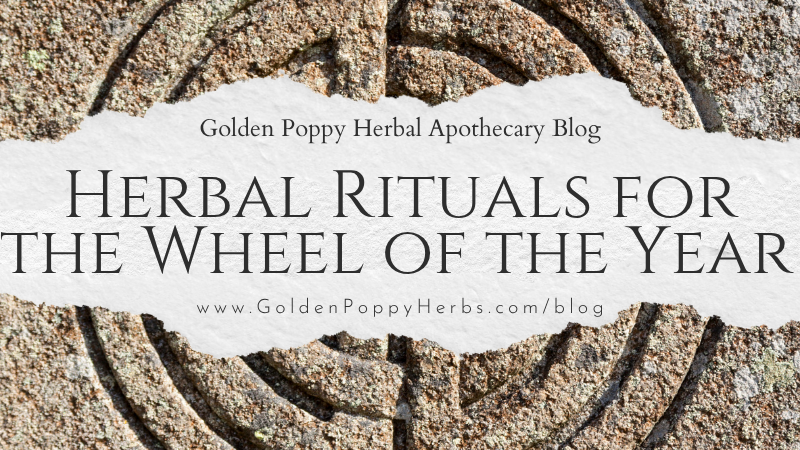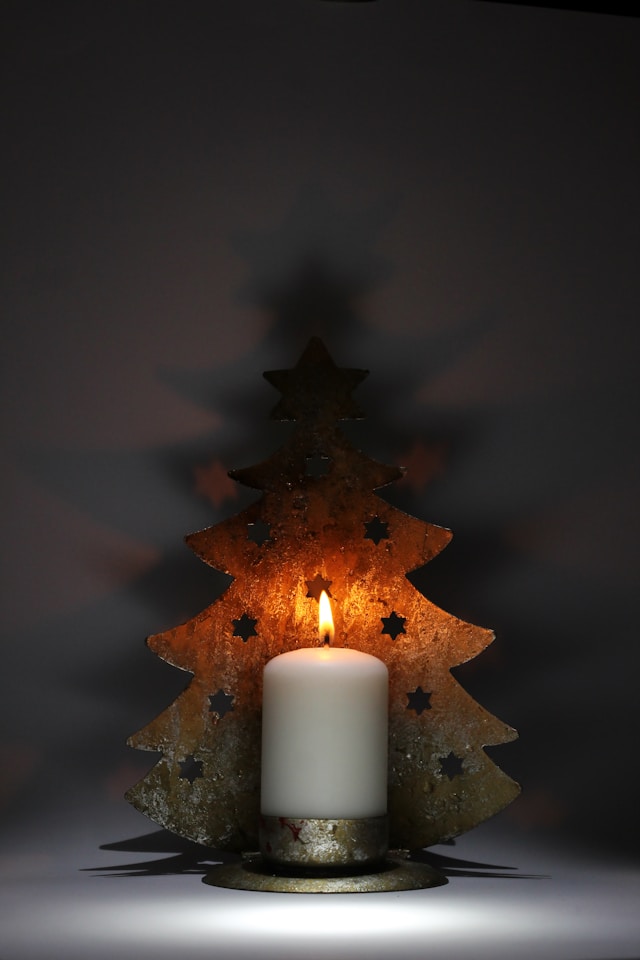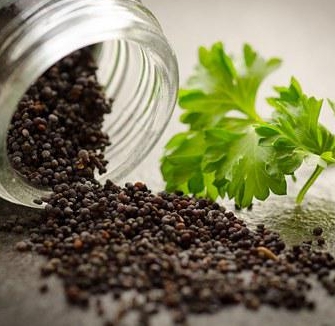
In early November, we still walk within the portal of Samhain (pronounced Sow-in), a sacred time in which we begin to bid adieu to the lighter half of the year and begin to welcome in the dark.
In our modern culture, we celebrate the beginning of the new year in January, a time that tends to go against our natural rhythms, both in body and in nature. January is smack dab in the middle of deep winter, a period, at least in the northern hemisphere, in which the earth is in deep slumber. It is not surprising that it can be difficult to feel motivated during this time, be it starting new projects, outlining your goal for the rest of the calendar year ahead, or starting a new workout regime. This is because we are yearning for rest, seeking our inner wisdom, and embracing all things calm and quiet.
Samhain, on the other hand, is a holiday that honors a different type of “new year.” This was the final of 3 traditional bonfire holidays in ancient Celtic culture, marking the end of the harvest season and preparing for the period of dark, short days. Interestingly, this holiday is associated with the idea of also embracing sacred death, as it is believed to be a period in which the “veil” between our world and that of the Otherworld, or the realm in which spirits of those who have passed on, or the energies of the more than human reside, is thin and entities may pass into our realm more easily. The ancient Celtic peoples also saw the end as the beginning – days began at dusk vs the dawn; life began with death versus birth. In this same vein, Samhain marked the beginning of the year, meaning they believed the year began with the initiation of the dark months, similar to how a seed first starts in the darkness of soil.
Along with the New Year, Samhain also is also the event which commenses the Wheel of the Year. This re-envisioned calendar serves as an alternative to the more modern Gregorian calendar we are accustomed to, and aligns with traditional customs and natural rhythms of nature. As we close out the portal of Samhain over these next few weeks, we invite you to join us in exploring the other dates that accompany this special cycle.
The Wheel of the Year
The Wheel of the Year, while it is said that it is rooted in ancient traditions, is actually a neo-pagan concept. This calendar draws on several traditions, though is fairly centric to druidic, Celtic, and indigenous traditions of the British Isles. It is for this reason as well that most of the events of the Wheel also align with what would typically be happening seasonally in the northern hemisphere. However, if you reside in the southern hemisphere, you simply would celebrate the event that is opposite on the calendar to be better aligned with the seasonal rhythms that are actually happening in your immediate environment (i.e., when the northern hemisphere is observing the autumnal equinox event of Mabon the southern hemisphere would actually be observing the spring equivalent, Beltaine).

Photo by Victoria Strukovskaya on Unsplash
The Wheel of the Year is broken into 8 seasonal observations, otherwise known as Sabbats. Each of these Sabbats celebrate and honor what is happening in nature, and holds a series of practices or traditions that help to align with that season. Additionally, the Sabbats also recognize correspondences, such as herbal allies that are relevant and align energetically with that event. Working with herbs throughout the Wheel of the Year can be a beautiful way to bring oneself in alignment with the rhythms of the natural world, and help us to better align our energy and spirit with the season.
Samhain
Samhain, as aforementioned is the “New Year.” Additionally, because the Wheel of the Year is often connected and credited to Gerald Gardner, an influential leader in the neo-pagan/neo-Druidic practice of Wicca, many often refer to Samhain also as “Witch’s New Year.” This is a time to start preparing for the many months that lie ahead, while also taking time to slow down energetically, get focused, and turn inward. At this time we also take time to honor that which has come before us, including ancestors, passed loved ones, and passed teachers and guides. It is a time in which we explore the concept of death, learning to dance with it versus fearing it.
Samhain also marks a period of mischief, where spirits cross the veil to play tricks on the living. This is where the tradition of Halloween comes to fruition, where people would dress up in costumes to help evade any spirits with less than benign intentions.
Herbs that are prevalent and relevant with this Sabbat include:
- Divination herbs such as Lavender, Mugwort, or Rosemary that allow us to come into better communion with spirit and divinity for purposes of prophecy, spirit contact, or enhancing psychic ability
- Protection herbs such as Hawthorn, Calendula, or Rue to help protect our energy and hearth spaces from negative entities or intentions that may try to pass the threshold.
Yule
When we think of the term “yuletide,” we often imagine twinkling lights, warm burning fires and stockings, snowy evenings, and of course, Christmas trees. The practice of brining a pine tree into the home and adorning it with decorations is actually more pagan in nature. Yule was a holiday celebrated in Scandinavian cultures and is a time that welcomes deep rest, honoring the return of the light that is promised as we pass the winter solstice, and sinking into the mystery that is the deep void.

Photo by Anne Nygård on Unsplash
Herbs that are prevalent and relevant to Yule include:
- Amanita Mushroom, which is deeply centric to Yuletide folklore, in which it was believed that the shaman-like practitioners of the North would work with this beautiful red and white spotted mushroom to divine predictions of the future, re-align energetic pathways, and receive information and downloads to help support the healing of their communities. It is also believed that this mushroom is what eventually inspired the character of Santa Clause. Note: Amanita, while beautiful is toxic and should be treated with deep care and with respect.
- Protection herbs such as Cinnamon and Holly – the dark half of the year would have been mysterious and frightening to our ancestors. While Yule was a time of joy and feasting, it was also a time of superstition, and measures would be taken to protect the home from anything that may go bump in the night.
- Immune boosting herbs such as Pine and Rose Hips – These herbs would have been some of the last to be harvested or available before the deep bitterness of winter arrived. These herbs are also high in Vitamin C, which would have kept cold and flu at bay during the cold months until spring.
Imbolc
Imbolc is the first observance that begins to honor the return of the light that is soon to come. It is also a holiday often associated with the goddess Brighid, who was known for community healing and herbal practices. On this night, it is customary to leave out a blue cloth, known as a Brat Bhride, which can be blessed with Brighid’s healing breath, and utilized to comfort a loved one when they are ill.
During Imbolc, we observe the “flame” that burns within us, knowing it is our duty to keep the fire lit in our spirit. Similar to the return of the light, we know we can always return to our true sense of self and that which we are most passionate about.
Herbs that can be invoked to honor Imbolc include:
- Herbs that have an affinity for the light, or “welcoming the sun” into the body such as St. John’s Wort or Calendula
- Warming herbs and spices such as Cayenne, Anise, Cinnamon, or Tumeric to help stoke the flame that burns within us.
Ostara
When we think off the spring holiday of Easter, it is often accompanied by symbols of birth and renewal such as baby lambs, ducks, and rabbits. This is actually a nod to the more ancient holiday known as Ostara, which marked the spring equinox. This is a time to celebrate the growth that is to come, and the fresh beginnings of the season as seeds begin to sprout, fresh life is born, greenery returns to the landscape, and the days begin to grow warmer.
It is at this time that we begin to set the seeds of our intentions, those things that we wish to nurture and tend to through the months that lie ahead. We can start dreaming of our garden, perhaps even sowing literal seeds, start setting in motion various projects, and make offerings and give gratitude to the earth for the abundance soon to come.
Herbs that correspond with Ostara include
- Nourishing herbs that flood the body and spirit with vitamins and minerals such as the wild weeds: Nettle, Oatstraw, Dandelion Leaf, Red Raspberry Leaf, Chickweed, or Cleavers
- “Spring Cleaning” herbs such as Sage, Lavender, Rosemary, Mugwort, Lemon, and Thyme that can used for smoke cleansing spaces or crafting homemade natural cleaners
- Herbs of Abundance and Renewal such as Comfrey, Elder Flower, Basil, or Bay Leaf that can be used in rituals to invoke prosperity or manifestation.

Photo by Alexander Grey on Unsplash
Beltaine
Beltaine is a juicy time of festivities that celebrates fertility, sensuality, and vitality. In this time, which mirrors that of Samhain’s honoring of death, Beltaine honors and celebrates the beautify of vibrant life. It is an observance of the peak energy of the spring season, and the first of the bonfire festivals. It’s a time in which there is a building of energy toward the summer solstice, folklore of the impregnating of the Maiden and the blessing of new life, and embracing all that brings joy and passion.
During Beltaine is also when most flowers are deeply in bloom, and we can observe the intimate dances of the bees as they create alchemy through pollination.
Herbs in which to invoke the energies of Beltaine include:
- Flower essences, where we can work with the energy and alchemy of vibrational medicine to awaken our soul and expand our spirit
- Sensual and heart opening herbs such as Cacao, Rose, and Tulsi
- Herbs that resonate with and have an affinity for the faeries, whom are most active during this day playing tricks on humans and dancing all through the night such as Hawthorn Flower, Marshmallow, and Lemon Balm
Litha
Litha, also known as Midsommer, aligns with the summer solstice. This is a day of celebrating the culmination of the vibrant energy of the summer season, and the day with the longest stretch of light. We celebrate the energy of fire on this day, knowing that soon the days will grow shorter and the buzzing energy will begin to wane. We celebrate the sun that is so vital to life on this planet and indulge in the bounty of nature.
Herbs that align with the Observance of Litha include:
- Plants with an affinity for solar energy including St. John’s Wort, Fireweed, Sunflower, Calendula, and Chamomile.
- Herbs that align with digestive fire such as Mugwort, Tumeric, Ginger, Fennel, and Cumin
- Energy-building herbs and stimulants such as Cacao, Schizandra Berry, Gingko, and Moringa
Lughnasa
This observance honors the Celtic sun god Lugh, and celebrates the beginning of the harvest season. It is at this time we begin the period of feasting and indulge in the abundance of that which we have nurtured and tended to throughout the months preceding it. We take pause and check in, making the necessary adjustments needed to continue on a path to success in our endeavors. Having passed the summer solstice, this is also a period in which a subtle slowing down begins to occur, and we can start to initiate practices of rest and restoration.
Herbs that celebrate and honor Lughnasa include:
- Food and culinary herbs – this is a time of feasting and most rituals are done in the kitchen! This is a time to be baking delicious and nourishing breads, preparing stocks, and preserving the harvest
- Medicine making – this is a time in which most herbs are likely either at their peak or have started to flower and go to seed and are no longer as medicinally potent. This is a time to harvest medicine and begin to start preparations to stock your fall and winter apothecary by drying herbs for teas, formulating tinctures, and infusing oils

Photo by Rebekah Vos on Unsplash
Mabon
Finally we conclude the wheel with Mabon. This is the classic fall festival Sabbot! Aligning closely with the autumn equinox, this is the time to enjoy all the festivities – visiting the pumpkin patch, getting lost in a corn maze, frolicking through the apple orchard and indulging in an apple cider donut. This is also the second of the three harvest festivals, so it continues to be a time of feasting and honoring abundance. During Mabon we likely are still experiencing warm days but starting to feel the slight shift of fall chill starting to encroach. We can start preparing for cozy days ahead, tending to our hearth spaces and giving some extra love to the home space.
Herbs to invoke the energy of Mabon:
- All of the cozy spices! Think mulling herbs such as Cinnamon, Cardamom, Clove. These are also herbs of prosperity and can be worked with to call in money and good fortune as we round out the year.
- Divination Herbs – Similar to Samhain, this is a magical time of the year. It is a sort of unofficial start to spooky season for many and you may begin to feel the allure of the mystery of the dark months that lie ahead. Work with herbs such as Marigold, Jasmine, Clary Sage, or Yarrow for purposes of energetic protection, enhancing of intuition, and for invoking wisdom.
We thank you dear readers for joining us on this turning of the Wheel of the Year.
We hope it inspires you to think of new ways in which you can integrate the herbal allies and attune to the seasons.
Additional Reading:
- Dig into the ancient Festival Traditions of Ireland & Britain: https://celticroundhouse.com/category/ireland
Browse by category
- Aphrodisiacs
- Aromatherapy
- Astrology & Magic
- Ayurdeva
- Botany Foraging & Gardening
- Chakras
- Digestion
- Earth Connection
- Energetics
- Flower & Gem Essences
- Folk Traditions
- Herbalism & Holistic Health
- Immune Support
- Materia Medica
- Mushrooms
- Nutrition
- Seasonal Living: Autumn
- Seasonal Living: Moon Cycle
- Seasonal Living: Spring
- Seasonal Living: Summer
- Seasonal Living: Winter
- Skin & Body Care

Don’t Miss a Thing!
Enter your email below to be the first to know about sales, new products and tips for taking care of your pieces.

